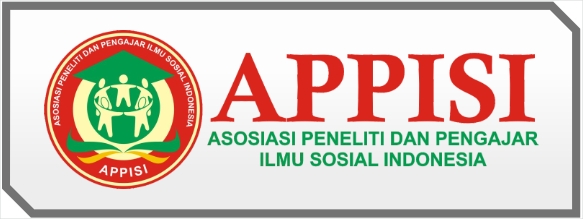Students' Anxiety in Speaking English: a Case Study in Online Classes
DOI:
https://doi.org/10.56127/jushpen.v4i1.2009Keywords:
speaking anxiety, FLCAS, anxiety level, communication apprehensionAbstract
The purpose of this study was to investigate the students’ level of anxiety in Speaking English in online classes at one university in Indonesia. The research used mix-method of quantitative and qualitative design. The quantitative data were analyzed by using The FLCAS (Foreign Language Classroom Anxiety Scale) by Horwitz et al., (1986) and qualitative data were analyzed by using Maxwell’s theory (1996). The data were categorized, coded and contextualized. There were 42 students who participated in the research. The research found that ten students were in anxious level, 23 students were in mildly anxious level and nine students were in relaxed level. The students admitted that grammar, vocabulary and pronunciation were the students’ problems in speaking. The factors caused them to have the anxiety in speaking can be categorized as communication apprehension, test anxiety and fear of negative evaluation. From the result of this research, the institution and the lecturers are expected to play major role in managing and reducing the students' anxiety. Various teaching methods and medias are hoped to make class become more interesting. Further research can be done by involving more participants and in experimental research to find out the solution to reduce the students' speaking anxiety.
References
Al-Jamili, O., Aziz, M., Mohammed, F., Almogahed, A., & Alawadhi, A. (2024). Evaluating the efficacy of computer games-based learning intervention in enhancing English speaking proficiency. Heliyon, 10(16), e36440. https://doi.org/10.1016/j.heliyon.2024.e36440
Botes, E., Van Der Westhuizen, L., Dewaele, J.-M., Macintyre, P., & Greiff, S. (2022). Validating the Short-form Foreign Language Classroom Anxiety Scale † 1,*. Applied Linguistics, 2022, 1006–1033. https://doi.org/10.1093/applij/amac018
Creswell, J. W., & David Creswell, J. (2018). Research Design: Qualitative, Quantitative, and Mixed Methods Approaches. Los Angeles: SAGE
Daud, A., Ras, F., Novitri, N., & Audia, C. P. (2019). Factors Contributing to Speaking Anxiety: A Case Study of Pre-Service English Teachers. Journal of Educational Sciences, 3(3), 412. https://doi.org/10.31258/jes.3.3.p.412-422
Fraenkel, J. R., Wallen, N. E., & Hyun, H. H. (2012). How to Design and Evaluate Research in Education (8th ed.). New York: McGraw-Hill.
Horwitz, E. K., Horwitz, M. B., & Cope, J. (1986). Foreign Language Classroom Anxiety. In Source: The Modern Language Journal (Vol. 70, Issue 2).
Ismail, S., Md Isa, H., Zakaria, N. N. N., Rahmat, N. H., Idris, N., & Mohd Taib, N. A. (2022). Foreign Language Classroom Anxiety Scale (FLCAS) Working Title: What Causes Foreign Language Anxiety? International Journal of Academic Research in Business and Social Sciences, 12(8). https://doi.org/10.6007/ijarbss/v12-i8/14534
Kelsen, B., & Liang, S. H. Y. (2024). Frontal EEG alpha asymmetry predicts foreign language anxiety while speaking a foreign language. Behavioural Brain Research, 475(July), 115216. https://doi.org/10.1016/j.bbr.2024.115216
Kralova, Z., & Petrova, G. (2017). Causes and consequences of foreign language anxiety. XLinguae, 10(3), 110–122. https://doi.org/10.18355/XL.2017.10.03.09
Maxwell, J. A. (1996). Qualitative research design: An interactive approach. Sage Publications.
Nyimbili, F., & Nyimbili, L. (2024). Types of Purposive Sampling Techniques with Their Examples and Application in Qualitative Research Studies. British Journal of Multidisciplinary and Advanced Studies, 5(1), 90–99. https://doi.org/10.37745/bjmas.2022.0419
Ölmezer-öztürk, E., & Öztürk, G. (2021). Reducing speaking anxiety in efl classrooms: An explanatory mixed-methods study. Porta Linguarum, 2021(36), 249–261. https://doi.org/10.30827/PORTALIN.V0I36.18018
Pituxcoosuvarn, M., Radhapuram, S. C. T., & Murakami, Y. (2024). Taboo Talks: Enhancing ESL Speaking Skills through Language Model Integration in Interactive Games. Procedia Computer Science, 246(C), 3674–3683. https://doi.org/10.1016/j.procs.2024.09.189
Saed, H. A., Haider, A. S., Al-Salman, S., & Hussein, R. F. (2021). The use of YouTube in developing the speaking skills of Jordanian EFL university students. Heliyon, 7(7), e07543. https://doi.org/10.1016/j.heliyon.2021.e07543
Seuling, P. D., Czernin, N. S., & Schiele, M. A. (2024). Virtual Reality exposure therapy in the treatment of public speaking anxiety and social anxiety disorder. Neuroscience Applied, 3(May), 104074. https://doi.org/10.1016/j.nsa.2024.104074
Simatupang, E. C., & Supri, I. Z. (2024). Fusing translanguaging with speaking technology in the hospitality industry: Improving English communicative competence. Social Sciences and Humanities Open, 10(September), 101166. https://doi.org/10.1016/j.ssaho.2024.101166
Tiono, N. I., & Sylvia, A. (2005). The Types of Communication Strategies Used by Speaking Class Students with Different Communication Apprehension Levels in. K@ta: A Biannual Publication on the Study of Language and Literature, 6(1), 30–46. http://puslit.petra.ac.id/journals/letters/30
Utibe Monday, T. (2020). Impacts of Interview as Research Instrument of Data Collection in Social Sciences. Journal of Digital Art & Humanities, 1(1), 15–24. https://doi.org/10.33847/2712-8148.1.1_2
Yalçın, Ö., & İnceçay, V. (2014). Foreign Language Speaking Anxiety: The case of Spontaneous Speaking Activities. Procedia - Social and Behavioral Sciences, 116, 2620–2624. https://doi.org/10.1016/j.sbspro.2014.01.623
Ye, T., Elliott, R., McFarquhar, M., & Mansell, W. (2024). The impact of audience dynamics on public speaking anxiety in virtual scenarios: An online survey. Journal of Affective Disorders, 363(June), 420–429. https://doi.org/10.1016/j.jad.2024.07.061





















